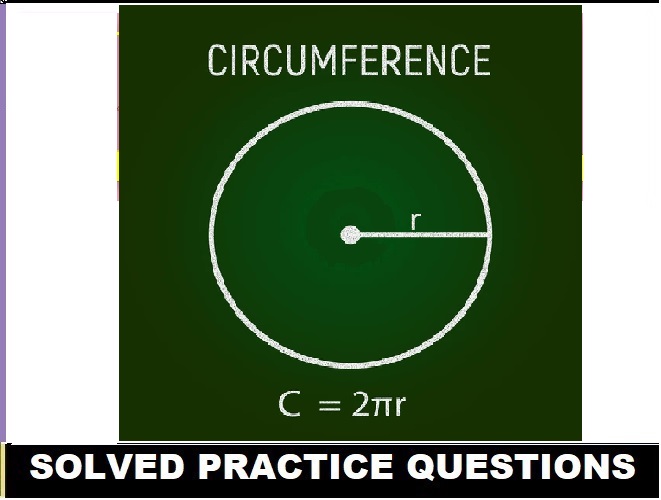Atmospheric Pollution Exe-8C Chemistry Class-9 ICSE Selina Publishers Solutions Chapter-8. Step By Step ICSE Selina Concise Solutions of Chapter-8 Atmospheric Pollution with All Exercise including MCQs, Very Short Answer Type, Short Answer Type, Long Answer Type, Numerical and Structured/Application Questions Solved . Visit official Website CISCE for detail information about ICSE Board Class-9.
Atmospheric Pollution Exe-8C Chemistry Class-9 ICSE Concise Selina Publishers
| Board | ICSE |
| Publications | Selina Publication |
| Subject | Chemistry |
| Class | 9th |
| Chapter-8 | Atmospheric Pollution |
| Book Name | Concise |
| Topics | Solution of Exercise – 8C (Global Warming) |
| Academic Session | 2023-2024 |
C. Exercise – 8C
Atmospheric Pollution Class-9 Chemistry Concise Solutions
Page-141
Question 1.
What do you understand by Green House effect?
Answer:
Heating of the Earth and its environment due to solar radiation trapped by carbon dioxide and water vapour in the atmosphere is called greenhouse effect.
Question 2.
What are green house gases? How are they responsible for global warming?
Answer:
Gases which contribute to the greenhouse effect are called greenhouse gases. These gases are carbon dioxide, water vapour, oxides of nitrogen, methane, ozone and chlorofluorocarbons.
three types of radiation
Sunlight reaching Earth consists of three types of radiation-UV radiation, visible radiation and IR radiation. As sunlight passes through the atmosphere, most UV radiation is absorbed by ozone; 30% of IR radiation reaches the Earth’s surface, heating it up.
As the Earth’s surface becomes hot, it starts emitting radiation with less energy than the incoming radiation and thus with longer wavelength. Some emitted IR radiation escapes from the Earth’s surface and some are absorbed by CO2, thus remaining on the Earth. Trapped radiation warms the Earth’s surface and lower layers of the atmosphere.
Question 3.
State the sources and effects of the following gases:
(i) Carbon dioxide
(ii) Methane
(iii) Water vapour
Answer:
(i) Carbon dioxide:
Sources of carbon dioxide:
- Burning of fossil fuels such as coal, natural gas and petroleum
- Industrial processes such as manufacture of lime and those in fermentation units
- Biological decay of plants
- Respiration by animals, human beings and plants
Effects of carbon dioxide:
- Greenhouse effect and global warming.
(ii) Methane
Sources of methane:
- Anaerobic decomposition of organic matter in soil, water and sediments
- Incomplete combustion of fossil fuels.
Effects of methane:
- Greenhouse effect and global warming.
(iii) water vapour:
Sources of water vapour:
- Burning of hydrocarbons
- Evaporation and transpiration
Effects of water vapour:
- Greenhouse effect and global warming.
Question 4.
State the ways of reducing the presence of green house gases.
Answer:
Ways of reducing the presence of greenhouse gases:
- Minimise the use of automobiles: Depending on the situation, one can use a bicycle, the public transport system and car pools.
- Plant more trees to increase green cover.
- Avoid burning of dry leaves and wood.
- Avoid smoking. It is illegal to smoke in public places and work places, because smoke is harmful not only for the one who is smoking but also for others sitting nearby.
- Help people in understanding global warming; most people are unaware of it.
Question 5.
State the effects of green house gases on the atmosphere.
Answer:
Effects of global warming
- Rise in sea level: Due to global warming, glaciers and polar ice caps have started to melt, and gradually this may lead to an increase in the sea level. This will in turn flood several coastal areas in countries such as India, Bangladesh, the Netherlands and the Maldives.
- Global warming will cause more water to evaporate from water bodies, thus forming more water vapour. Because water vapour also contributes to the greenhouse effect, global warming will further increase.
- Global warming can lead to changes in the rain pattern and thus shift in crop zones. For example, wheat-producing zones will shift from Russia and Canada to the less fertile polar regions.
- Change in rain pattern due to global warming will also affect trees and plants in forests which are natural habitats of wild life. With destruction of forests, many species of wild life will also begin to die out.
Question 6.
State the role of a green house in growing plants.
Answer:
A greenhouse collects light and converts it to heat. It also stores thermal energy and helps moderate temperature and produces a controlled environment for plants to grow and thrive. It even offers protection from wind, rain, snow and other weather elements and protects fruits from invading pests and animals.
Question 7.
Our atmosphere acts as a green house. Explain.
Answer:
Our atmosphere contains greenhouse gases such as CO2, water vapour, O3, CH4, oxides of nitrogen and CFCs and allows the sunrays to come in. Sunlight reaching the Earth consists of three types of radiation-UV radiation, visible radiation and IR radiation. As sunlight passes through the atmosphere, most UV radiation is absorbed by ozone; 30% of IR radiation reaches the Earth’s surface, heating it up.
As the Earth’s surface becomes hot, it starts emitting radiation with less energy than the incoming radiation and thus with longer wavelength. Some emitted IR radiation escapes from the Earth’s surface and some are absorbed by CO2, thus remaining on the Earth. Trapped radiation warms the Earth’s surface and lower layers of the atmosphere.
Question 8.
How can we reduce global warming?
Answer:
Ways of reducing global warming:
- Minimise the use of automobiles: Depending on the situation, one can use a bicycle, the public transport system and car pools.
- Plant more trees to increase green cover.
- Avoid burning of dry leaves and wood.
- Avoid smoking. It is illegal to smoke in public places and work places, because smoke is harmful not only for the one who is smoking but also for others sitting nearby.
- Help people in understanding global warming; most people are unaware of it.
— : End of Atmospheric Pollution Exe-8C Answer Class-9 ICSE Chemistry Solutions :–
Return to Return to Concise Selina ICSE Chemistry Class-9
Thanks
Please share with your friends


